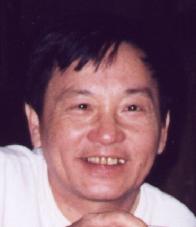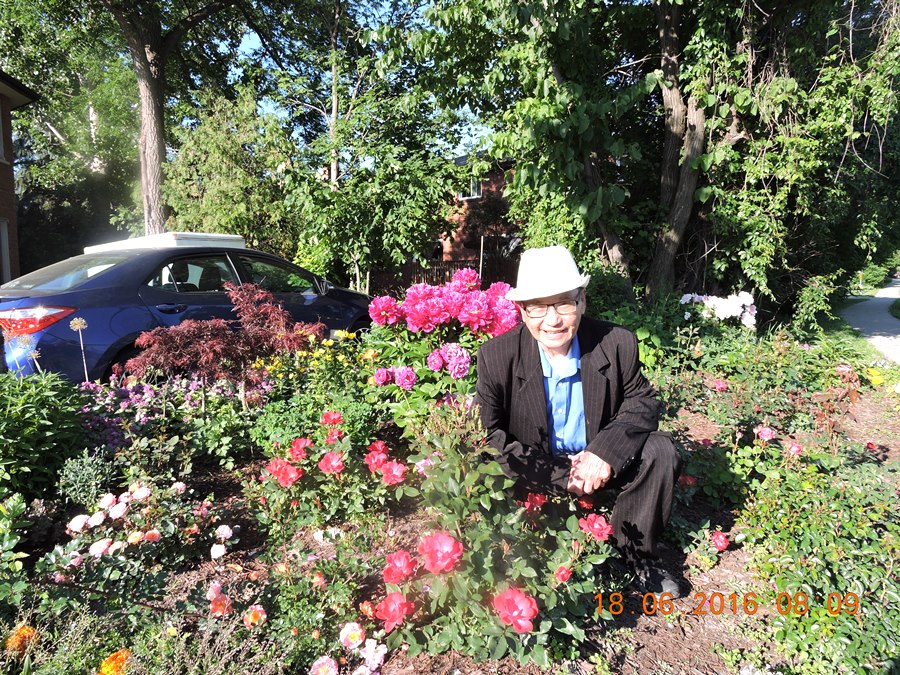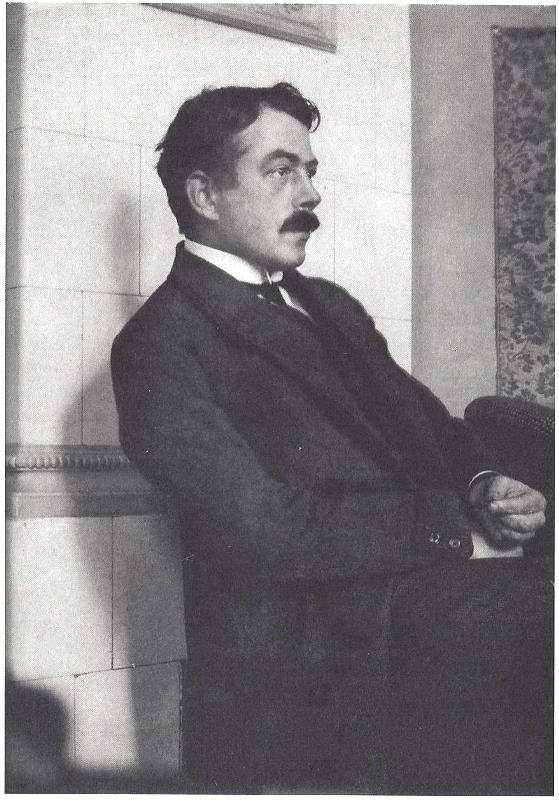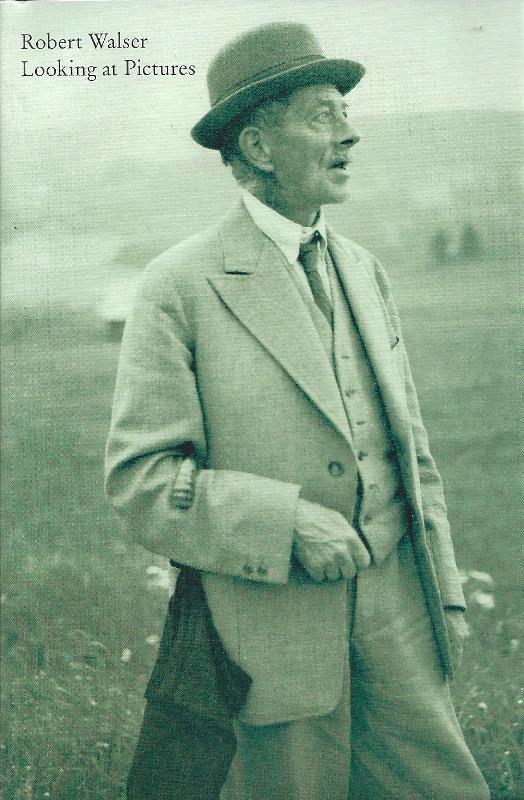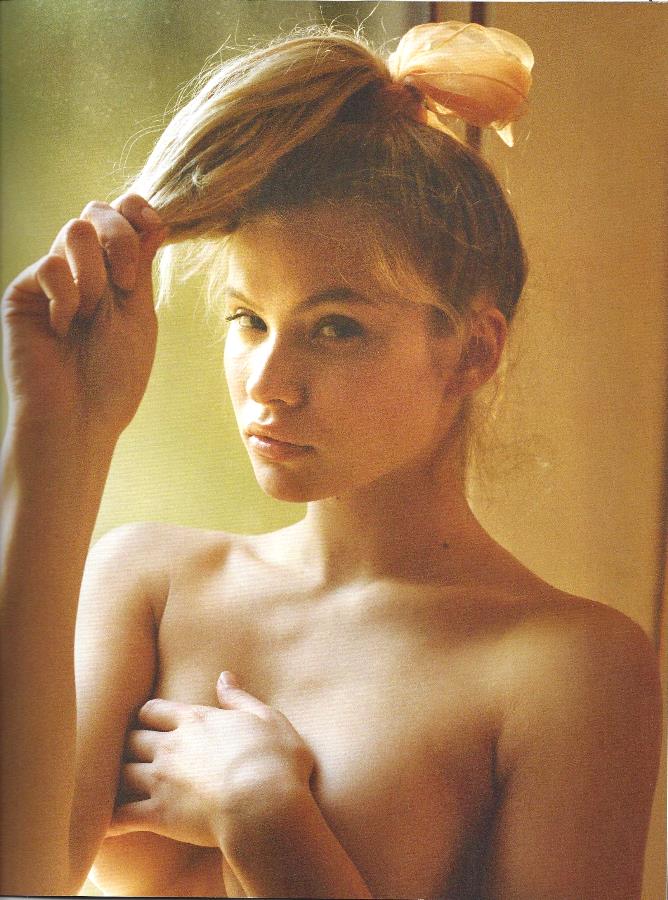Nguyễn Quốc Trụ
Sinh 16 tháng Tám,
1937
Kinh
Môn,
Hải Dương
[Bắc
Việt]
Quê
Sơn
Tây
[Bắc Việt]
Vào
Nam
1954
Học
Nguyễn
Trãi
[Hà-nội]
Chu Văn An,
Văn Khoa
[Sài-gòn]
Trước
1975
công
chức
Bưu
Điện [Sài-gòn]
Tái
định
cư năm
1994
Canada
Đã
xuất
bản
Những
ngày
ở Sài-gòn
Tập
Truyện
[1970,
Sài
Gòn,
nhà
xb Đêm
Trắng
Huỳnh
Phan
Anh
chủ
trương]
Lần
cuối,
Sài-gòn
Thơ,
Truyện,
Tạp
luận
[Văn
Mới,
Cali.
1998]
Nơi
Người
Chết
Mỉm Cười
Tạp
Ghi
[Văn
Mới,
1999]
Nơi
dòng
sông
chảy
về phiá
Nam
[Sài
Gòn
Nhỏ,
Cali,
2004]
Viết
chung
với
Thảo Trần
Chân
Dung
Văn Học
[Văn
Mới,
2005]
Trang Tin Văn, front page, khi quá đầy,
được
chuyển
qua Nhật
Ký
Tin Văn,
và
chuyển
về
những
bài
viết
liên
quan.
*
Một
khi
kiếm,
không
thấy trên
Nhật
Ký,
index:
Kiếm
theo
trang
có
đánh
số.
Theo
bài
viết.
Theo
từng
mục,
ở đầu trang
Tin
Văn.
Email
Nhìn
lại
những trang
Tin
Văn
cũ
1
2
3
4
5
Bản quyền Tin Văn
*
Tất
cả bài
vở
trên
Tin Văn,
ngoại
trừ
những
bài
có
tính
giới
thiệu,
chỉ
để sử dụng
cho cá
nhân
[for personal
use], xài
thoải
mái
[free]
Liu
Xiaobo
Elegies
Nobel
văn
chương
2012
Anh
Môn
Kỷ niệm 100 năm sinh của Milosz
IN MEMORIAM
W. G. SEBALD
http://tapchivanhoc.org
|
Waiting For SN
Bác «lãng
mạn» quá, cứ mong chờ có một cú ngoạn
mục của các nhân tài.
O.
Lãng mạn phải là
chúng mày mới đúng. Đau khổ cho nhiều vào,
đọc sách cho nhiều vào, xót thương mình chưa
đủ rồi xót thương người… để mơ mộng: cách mạng. Ôi
chao cách mạng! Cách mạng để làm gì? Những
con ngựa bị hành hạ đau quá thì lồng lên hất
thằng dô kề ngã mà chạy. Chạy đi đâu? Thằng
dô kề nó sẽ túm được, nó đánh đập tàn
nhẫn hơn và lại sỏ cương trèo lên.
Bếp
Lửa [TTT]
Ngày
Lễ Cha
Kenzaburo
Oe: Cha và Con ( Nguyễn Quốc Trụ)
Vài dòng về một người cha ( Phạm Đình
Lân)
Con sẽ
về ( Hoa Cát Phan Văn)
Khi Chúa tạo ra những Ông Bố - Erma
Bombeck ( Đặng Lệ Khánh dịch)
Thư gởi ba - Lisa M. Krieger (Đặng
Lệ Khánh dịch)
Hạt giống (
Hồ Đình Nghiêm)
Thần tượng ( Ca
Dao)
26
Three Letters to His Father
[Thư gửi Bố của Kafka]
Kafka's lengthy letter to his father, composed
in mid-November 1919 in Schelesen (Zelizyj, is now considered
to be one of the most powerful and paradigmatic father-and-son
confrontations. Less well known, however, is the fact that this
letter had a precursor, which Kafka abandoned after just a few
pages. Unlike the finished "Letter to His Father," this earlier
draft is still formally addressed to both of his parents, although
the true addressee is clearly just his father:
Dear Parents, on the evening
when Hugo Kaufmann last visited us, and you Father, Karl, and Hugo
discussed various business and family affairs, I later overheard
you from the bathroom, complaining to Mother about my lack of engagement
in the conversation. It was not the first time that I have heard
you make these sorts of accusations against me, Father, and you have
not always done it through closed doors, you have also said it directly
to my face, and your accusations have not been not limited to my lack
of engagement, Father, as weighty as that is in itself-still, your criticism
that evening, although I could not even hear all of it clearly, made
me even sadder than usual. For a long time I sought some way out, until
finally, as I lay in bed, it occurred to me that I could write you a
letter and explain everything, since you would have time to read at the
spa. This idea gave me such joy that I thought at once of 100 things that
I must write to you, and moreover of a system that would make them completely
persuasive. The next morning, though, while my joy about the idea was still
there, as it still is today, my confidence in my own ability to carry
it out is lacking, although in the end my task comes down to the most basic
things. So I am beginning this letter without self-confidence, and only
in the hope that you, Father, will still love me in spite of it all, and
that you will read the letter better than I write it.
If you think back a bit, Father, I'm sure we agree
that our relationship in the past few years has been almost unbearable
at times. (My relationship to Mother may not be fundamentally
different, but because of her unlimited selflessness, which relieves
me of all my duties to her, I do not see that and barely feel it.)
I am to blame for this unbearable relationship, I alone. In general
I have not concerned myself with your affairs even as much as a casual
acquaintance would have done (to say nothing of a son's duties), and
when I did concern myself with them, it was clear that I was only doing
so under pressure; I have not fulfilled my responsibilities to my Sisters,
and in that respect I have not relieved you of any troubles;
This draft, which cannot be
dated, has a much more defensive tone than the finished letter;
therefore it was certainly written before 1919, possibly years earlier
(Hans-Cerd Koch, the editor of Kafka's letters, considers May 1918
to be the most likely date). Apparently this draft was written before
several family conflicts arose, cases where Kafka considered his father
to be clearly in the wrong- particularly Hermann's alienation from his
daughter Ottla, as well as the conflict surrounding Kafka's recent engagement
to Julie Wohryzek. When Kafka told his parents in September 1919 that he
intended to marry Wohryzek, a woman of modest means, his father berated
and humiliated him. After that altercation, Kafka felt a need to settle
a score, not merely to explain himself.
In addition to this draft and
the famous later letter, Kafka made at least one more attempt
to resolve their differences in writing. In April 1918, as he prepared
to return to his parents' apartment in Prague after spending months
on a farm where his sister Ottla was the caretaker, he sent a letter
in advance to his father. In it, Kafka apparently touched on quite
uncomfortable topics, especially his father's aversion to the country
life that Ottla had chosen-an aversion so intense that the mere mention
his youngest daughter was sometimes enough to make their father fly into
a rage. This letter is no longer extant but evidence of its impact can
be seen in an unpublished letter written to Ottla by her close friend,
their cousin Irma. Irma worked in Kafka's father's fancy goods store, so
she was particularly subject to his moods. On April 25, 1918, five days
before Kafka returned to Prague, Irma complained to Ottla about "the mess
Franz made for me with his letter to your father."
To die for others
is difficult enough.
To live for others is even harder.
G. Steiner: Errata
Nhờ ông bố, Steiner thoát chết ở Lò Thiêu.
Tôi cũng là thứ sống sót, ông nói về mình.
Và, bèn tự an ủi, bằng câu trên
Chết vì người khác, đủ khó
Sống vì họ, khó hơn nhiều!
Thơ Mỗi Ngày
http://www.newyorker.com/magazine/2016/06/20/fourteen-by-marie-howe
Poems June 20, 2016 Issue
Fourteen
By Marie Howe
She is still mine—for another year or
so—
but she’s already looking past me
through the funeral-home door
to where the boys have gathered
in their dark suits.
Mười bốn
Em vưỡn là của GCC - một năm nữa, cỡ đó
Nhưng Em đã nhìn quá GCC
Qua cái cửa nhà đòn
Tới cái chỗ đám nhóc trong những
bộ đồ tang tụ tập
Đinh Cường Tribute
Tribute to
Robert Walser
http://www.nybooks.com/articles/2016/06/23/robert-walser-adorable-bookling/
Robert
Walser, Berlin, cc 1907
‘An Adorable Bookling’
Looking at Pictures
by Robert Walser, translated from the German by Susan Bernofsky,
with additional translations by Lydia Davis and Christopher Middleton
Christine Burgin/New Directions, 143 pp., $24.95
Tờ NYRB số mới nhất, 23 June,
2016, đi 1 đường về Walser, điểm cuốn Tin Văn đã/đang giới thiệu,
Looking at Pictues, như 1 tưởng niệm 10 năm TTT
ra đi, và bạn ông, Đinh Cường, mới ra đi.
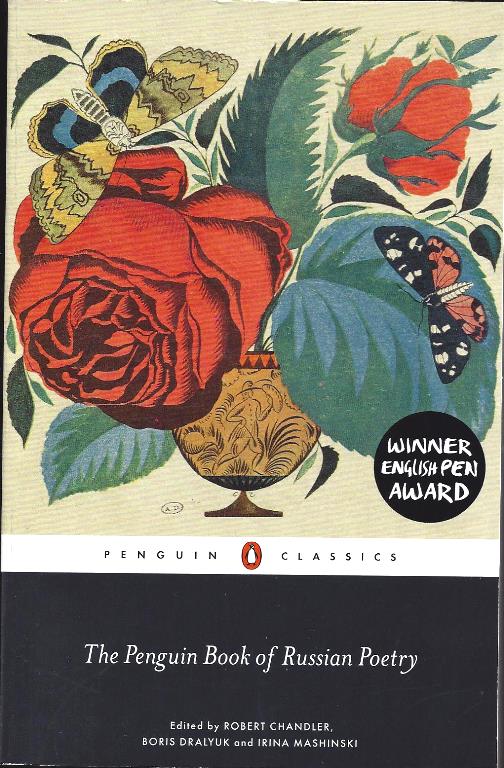
Elena Shvarts (1948-2010)
Born in Leningrad, Elena Andreyevna Shvarts
attended the University of Tartu in Estonia. She published her
first poems in the Tartu University newspaper in I973, but from
then until 1989 - although well known in Russia - she was able
to publish only abroad or in samizdat.
The poet and translator Sasha
Dugdale writes: 'In Shvarts's poetry, the world about her is
transformed into a unique and mystical landscape, half-real, half-Breughelesque
fantasy. St Petersburg's streets and enormous tenement blocks
are peopled by the souls of the dead, the River Neva is an often malign
force, the street where she once lived becomes "my Paradise, my lost
Paradise". Her work is full of religious imagery: angels, demons,
fools-in-Christ, icons and visions of heaven and hell, but the belief
which illuminates the poems is far from orthodox. [ ... ] In her
writing, poetry itself is the sacred act [ ... ] She writes in
one poem, "When an angel carries away my soul/all shrouded in fog,
folded in flames / I have no body, no tears to weep / just a bag
in my heart, full of poems."
A metaphor running though
Shvarts's work is that of bird- song escaping from a cage. The
poem 'Birdsong on the Seabed' ends:
Is it worth singing where no one can hear,
unrolling trills on the bed?
I am waiting
for you, I lean from the boat -
bird,
ascend to the depths.
(trans. Sasha Dugdale)
The second and third of the poems below are
among the last
Shvarts wrote.
*
How shameful it is to grow
old -
I don't know why,
after all I never made a vow
I wouldn't die
or slip away, my white hairs shining
to the pitch-dark cellar,
nor did I promise myself
I'd stay a child for ever,
but all the same I'm suddenly uneasy -
my withering is plain.
I know why it hurts so much,
but why, oh why, this sense of shame?
(1994)
Sasha Dugdale
On the Street
A mirror's gaze slipped across
me
half-mocking, half-severe
and in it, crooked, staring back
some laughable old dear.
Mirrors have often shown me change
yet in them, always, a face I knew-
till now. It would have seemed less strange
to see a beast come leaping through.
(2010)
Sasha Dugdale
Song
The sun once sang of safety
as it rose above
but then the sun knew nothing
of dark destroying love.
Down swept the sky,
slipped purple on the snows
and the blue tit piped:
your life draws to its close.
(2010)
Sasha Dugdale
En
attendant SN
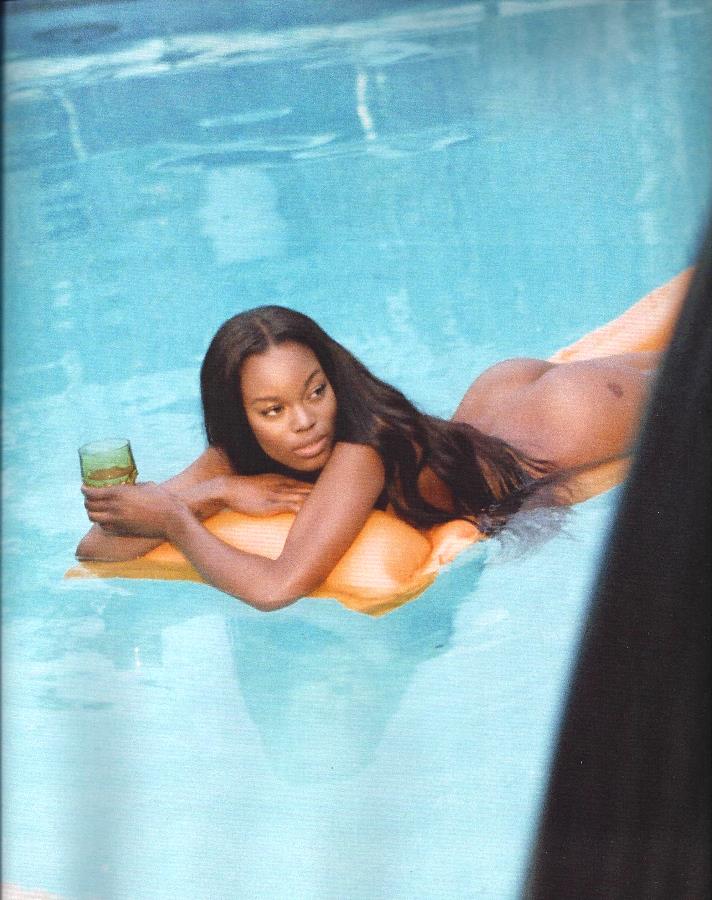 Âm nhạc của trái cầu
Âm nhạc của trái cầu
Chúng ta chẳng bao giờ
trưởng thành, nhưng cứ thêm tuổi mãi ra, già
mãi ra, rồi già.
Fourteen
She is
still mine—for another year or so—
but she’s
already looking past me
through
the funeral-home door
to where
the boys have gathered in their dark suits.
Mười
bốn
Em vưỡn là của GCC - một
năm nữa, cỡ đó
Nhưng Em đã nhìn quá GCC
Qua cái cửa nhà đòn
Tới cái chỗ đám nhóc trong những
bộ đồ tang tụ tập.
Nếu như thế, cuộc đời của Em chỉ
có, khi có GCC trong đời Em.
Chỉ đến khi, vào những ngày Sài Gòn
đầy biến động, khi làm tờ TSVC, khi có cái số phôn của tòa
soạn, và cũng là số phôn của gia đình, bèn
nhờ Cô Nga, 1 nữ điện thoại viên trên Đài
gọi giùm, và khi hỏi thăm boyfriend, Em cho biết, anh
ấy được lòng Bố em lắm, cứ nghe rục rịch đảo chánh, là
bèn vác mấy bao gao đến nhà cho Bố của em rồi.
Ngưng một lúc thật lâu, rồi Em nói tiếp:
-Gấu không làm được việc đó đâu!
-Đừng bao
giờ nói, mi không xứng đáng!
-Đừng bao giờ nói, mi làm hư tuổi thơ của ta!
Khi tôi gặp chàng
lần đầu tiên, tôi mười một tuổi.
Khi chàng đăm đăm nhìn
tôi, bỗng nhiên tôi nghĩ tới những chữ kỳ lạ như tình
yêu, tình yêu, yêu... và tôi bỗng
bàng hoàng run sợ...
Không,
trăm lần không, ngàn lần không, đừng bao giờ nói
như vậy, đừng bao giờ nói anh không xứng đáng, cũng
đừng bao giờ nói anh làm cho tuổi thơ của Hương bị xáo
trộn
Khi GCC nằm nhà thương Đô Thành, BHD không
dám vô thăm. Đọc báo Chính Luận, thấy
GCC thuộc loại bị thương nặng, khóc, mà không
dám dụi mắt, sợ mắt sẽ đỏ, mọi người trong nhà sẽ
biết. Khi Gấu chuyển vô Grall, ghé thăm đâu cũng
được một, hai lần; một lần, trên đường đi, ghé 1 tiệm
sách ở Lê Lợi, mua 1 cuốn của J.H. Chase, Un beau
matin d’été, Một sáng đẹp mùa hè.
Hỏi, đọc chưa. Gấu ngu quá, nói đọc rồi, em, mặt xịu
xuống, H. cũng nghĩ là anh đọc rồi.
Khi về nhà dưỡng thương, ở hẻm Nguyễn Huỳnh
Đức, Phú Nhuận, có ghé, rồi, khi về Đài
làm việc, với cái tay băng bột, cũng ghé.
Khi tháo băng bột, là mối tình
chấm dứt.
Cái đoạn, chạy theo em, nơi cổng trường
Đại Học Khoa Học, Đại lộ Cộng Hòa, xẩy ra đúng như
vậy. Gấu không thêm bớt, tưởng tượng.
Sau này, nghe qua Vy, cô em họ, em
nói, học Y Khoa mấy năm dài, làm sao bắt anh
Gấu đợi. Mà đợi, thì cũng chắc gì đã nên
vợ, nên chồng. Hơn nữa, anh Gấu, có bằng cấp, công
chức chánh ngạch Bưu Điện, có nhà nhà
nước cấp, lại viết văn nữa, thiếu gì người lo cho anh ấy…
Em tính toán y hệt 1 cô gái
Bắc Kít. Thật là chu đáo. Nhưng lý
do chính, là, em không muốn Gấu phải gọi ông
bố của em là bố!
Nhớ, lần đi chơi trong Chợ Lớn, về, ghé
hình như cũng đường Lê Lợi, để em đi bộ về nhà.
Ra khỏi xe, có một bà và 1 cô gái,
đứng bên hè đường đợi tắc xi, hóa ra là
cô bạn cùng lớp, và bà mẹ của cô.
Cả hai cùng trố mắt nhìn. Gấu hoảng quá. Em tỉnh
bơ, như người Hà Nội, chào, và giới thiệu Gấu,
không phải bạn trai, mà là bạn của ông
anh.
Thật là chững chạc.
Ui chao, sau đọc MCNK, cũng có 1 cảnh y
chang. Nhưng thê lương hơn nhiều.
Và tôi nhớ ra rằng
thì là Giorgio Agamben đã từng giải thích,
với mỗi một thằng cu Gấu ở trong chúng ta, sẽ xẩy ra một cái
ngày, mà vào ngày đó, Bông Hồng
Đen từ bỏ nó.
“Y hệt như là, bất thình lình, trong đêm
khuya, do tiếng động của một băng con nít đi qua cửa sổ của
căn phòng của bạn, và bạn cảm thấy, chẳng hiểu tại ra
làm sao, vì nguyên cớ nào, vị nữ thần, người
nữ muôn đời của bạn, từ bỏ bạn”.
Và nàng nói, “Bây giờ H. hết
lãng mạn rồi!”
Hình như, luôn luôn là, đối với Gấu tôi,
khi đến cõi đời này, là để tìm kiếm trong
giây lát, vị nữ thần của riêng Gấu tôi, vị nữ
thần của một đứa con nít, một thằng bé nhà quê
Bắc Kỳ, thằng bé đó chơi trò chơi phù thuỷ
thứ thiệt của giấc mơ.
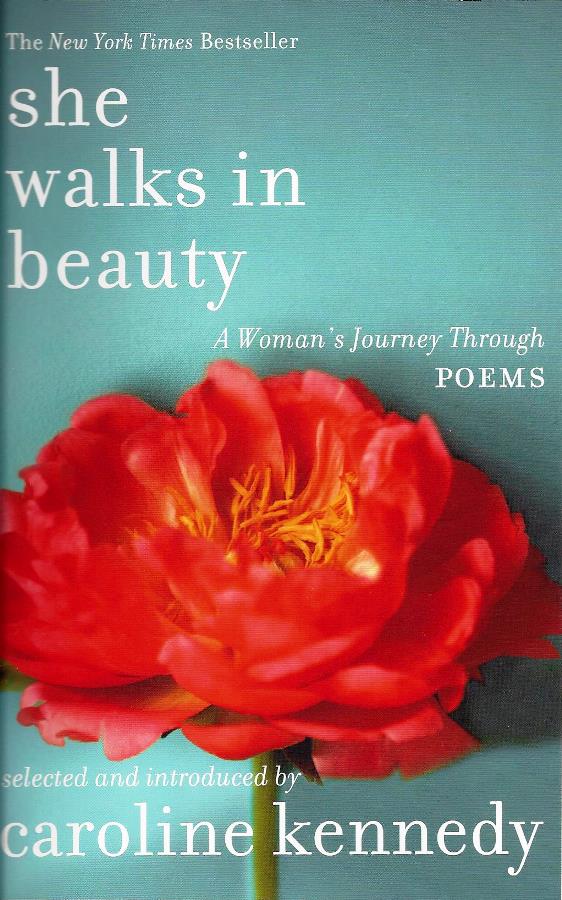
Tựa hồn những năm xưa
"Entends, la douce
Nuit qui marche" [Hear, my darling, hear, the sweet Night who
walks]. The silent walking of the night should not be heard.
Baudelaire
She walks in beauty, like the
night
Byron: Hebrew
Melodies (1815):
She walks in beauty, like the
night
Byron: Hebrew Melodies (1815):
Nàng bước trong cái đẹp, như đêm
Borges phán:
Để chấp nhận dòng trên, người đọc
phải tưởng tượng ra một em, cao, tối, tall, dark, bước đi như Đêm,
và Đêm, đến lượt nó, là 1 người đàn
bà cao, tối, và cứ thế, cứ thế.
Tưởng tượng đẩy tưởng tượng,
câu "hót" BHD, thần sầu, "không phải của
GNV", làm nhớ đến lời nhạc thần sầu của TCS, trong Phôi Pha:
Từ vườn khuya bước về
Bàn chân
ai rất nhẹ
Tựa hồn những năm xưa.
BHD ở ngoài đời, cao,
đen, nhập vào với đêm, y chang lời nhạc của TCS
mô tả, những lần "bàn chân ai rất nhẹ, tựa
hồn những năm xưa!"
Lũ Mít, ai không biết, riêng
với GCC, đọc/viết không phải là duyên
mà là... họa!
Cái đọc trước 1975,
là để rước cái họa Lò Thiêu
sau này!
Là, để vào lúc,
tới được Xứ Lạnh, vô thư viện Toronto và cầm lên
cuốn Ngôn ngữ và Câm lặng
của Steiner!
Primo Levi phán
y chang:
Viết và cho xb
Đây có phải là
1 người, và Hưu Chiến, đánh 1
cái dấu quyết định lên đời tôi, không
chỉ như là 1 nhà văn...
Kafka mà không
thế ư. Ông Trời năn nỉ thiếu điều lạy lục tôi,
đừng viết.
NO!
Since then, at an uncertain
hour,
That
agony returns:
And
till my ghastly tale is told,
This
heart within me burns.
Kể từ đó, đâu
biết giờ nào,
Cơn hấp hối đó trở lại,
Và cho tới khi câu chuyện
thê lương của tôi được kể
Trái tim này trong tôi
bỏng rát.
Để "minh họa" cho cái
ý tưởng, cái đọc trước 1975, giống như 1 cuộc xét
nghiệm, the test, của Kafka, hay, như 1 sửa soạn, trained, theo bài
viết trên tờ Guardian, theo đó, can đảm là
phải được rèn luyện, để sau này, ra hải ngoại, được hưởng
cái họa/món quà của Thượng Đế… : Lò
Thiêu, GCC kể chuyện tù VC ở nông trường cải tạo Đỗ
Hòa, Nhà Bè.
The test, the trained, tên tù VC....
"Cho đến khi câu chuyện thê luơng được
kể,
Trái tim này trong GCC bỏng rát"
Đã tính không kể, mang đi theo,
nhưng ông Trời chưa cho đi....
V/v cái họa, món quà…. vị bằng
hữu O. cho biết, nó chỉ là “sự nhẹ nhàng”:
Câu này của OVID, người La Mã,
chết trước Chúa Giêsu khoảng chục năm
Bác tìm câu Mathêu, chương
11, "hãy mang lấy ách của Ta' tìm trong usccb.org
của các giám mục Mỹ, bác sẽ thấy light nghĩa
là nhẹ nhàng.
Hãy đến với Ta, hết thảy những kẻ lao đao
và vác nặng". Và Ta sẽ cho nghỉ ngơi lại sức:
29 Hãy mang lấy ách của Ta vào
mình, hãy thụ giáo với Ta, vì Ta hiền
lành và khiêm nhượng trong lòng, và
các ngươi sẽ tìm thấy sự nghỉ ngơi cho tâm hồn.
30 Vì chưng ách Ta thì êm ái, và
gánh Ta lại nhẹ nhàng".
Bible Mathew chpter 11
27 “All things have been committed to me by my Father.
No one knows the Son except the Father, and no one knows the Father
except the Son and those to whom the Son chooses to reveal him.
28 “Come to me, all you who are weary and burdened,
and I will give you rest. 29 Take my yoke upon you and learn from
me, for I am gentle and humble in heart, and you will find rest for
your souls. 30 For my yoke is easy and my burden is light.”
28 « Venez à moi, vous tous qui peinez
sous le poids du fardeau, et moi, je vous procurerai le repos.
29 Prenez sur vous mon joug, devenez mes disciples,
car je suis doux et humble de cœur, et vous trouverez le repos pour
votre âme.
30 Oui, mon joug est facile à porter, et mon
fardeau, léger. »
Sách
Báo
Đọc/Viết
mỗi ngày
Picasso and the Fall of Europe
A vision
of Europe in 1950:
Two world
wars in one generation, separated by an uninterrupted chain of local wars
and revolutions, followed by no peace treaty for the vanquished and no
respite for the victor, have ended in the anticipation of a third world
war between the two remaining world powers. This moment of anticipation
is like the calm that settles after all hopes have died. We no longer hope
for an eventual restoration of the old world order with all its traditions,
or for the reintegration of the masses of five continents who have been
thrown into a chaos produced by the violence of wars and revolutions and
the growing decay of all that has still been spared. Under the most diverse
conditions … we watch the development of the same phenomena – homelessness
on an unprecedented scale, rootlessness to an unprecedented depth …
It is as
though mankind had divided itself between those who believe in human omnipotence
(who think that everything is possible if one knows how to organise masses
for it) and those for whom powerlessness has become the major experience
of their lives.
On the level
of historical insight and political thought there prevails an ill-defined,
general agreement that the essential structure of all civilisations is
at breaking point. Although it may seem better preserved in some parts
of the world than in others, it can nowhere provide the guidance to the
possibilities of the century, or an adequate response to its horrors.
The seer is Hannah Arendt, in the 1950
preface to The Origins of Totalitarianism. When she wrote a
new preface to the book in 1966, and looked back for a moment at her
original judgment, she was a touch apologetic. The Origins had
been drafted between 1945 and 1949, and in retrospect it registered,
she had come to feel, as a first effort to understand what had happened
in the opening half of the 20th century, ‘not yet sine ira et studio,
still in grief and sorrow and, hence, with a tendency to lament, but no
longer in speechless outrage and impotent horror’. ‘I left my original
preface in the present edition in order to indicate the mood of those
years.’
I understand
her unease. Already by the mid-1960s, the moment of The Origins of Totalitarianism’s
second edition, the tone and even the substance of her 1950 reckoning
with fascism and Stalinism had a period flavour. The world – or at least,
the world of European and European-in-exile intellectuals – had decided
that the 20th century’s long catastrophe was over. Many thought that 1962,
the year of the Cuban Missile Crisis, had marked its ending. And whatever
crisis of civilisation had succeeded the earlier terrible catastrophe –
Arendt and her friends were far from certain how to characterise the new
situation, and certainly not inclined necessarily to see it as a respite
from ongoing decay and powerlessness at the level of civil society – it
could no longer be written about (or depicted) in epic terms. The fall
of Europe had happened, tens of millions had perished, but the fall of
Europe had not proved a new fall of Troy. After it had not come the savage
god. Maybe ‘the essential structure of civilisation’ had broken; but the
breakage, in the years after 1950, had failed to give rise to a new holocaust
or a final nuclear funeral pyre. In place of the banality of evil had arrived
the banality of Mutually Assured Destruction.
‘Two world
wars in one generation, separated by an uninterrupted chain of local wars
and revolutions’: perhaps it goes without saying that for Arendt’s generation
the revolution that summed up the previous horror – staging, as it had
seemed to, the essential combat between fascism and communism with special
concentrated violence, and drawing into it left and right partisans from
across the world – was the Civil War in Spain. It was, for them, the epic
event of the mid-20th century. Picasso’s Guernica had given it
appropriate, unforgettable form.
The painting
still does, of course. Arendt may have been right to feel a twinge of embarrassment
at the tragic, exalted, ‘catastrophist’ tone of her 1950 preface, and
to have thought by 1966 that the fate of mass societies in the late 20th
century needed to be approached in a different key. But her thinking has
not carried the day. The late 20th century, she argued, would only truly
confront itself in the mirror if it recognised that the battle for heaven
on earth (the classless society, the thousand years of the purified race)
was over. It had given way (this is Arendt’s implication) to a form of
‘mock-epic’ or dismal comedy – still bloodstained and disoriented, but
divested, by the evidence of Auschwitz and the Gulag, of the deadly dream
that everything is possible. And it is this post-epic reality we should
now learn to live with, she believed – maybe even to oppose. We shall only
do this, her 1966 preface says, if we manage to look back on the hell of
the totalitarian period with thorough bemused disillusion. We have to learn
how not to allow the earlier 20th century to stand for the human condition.
We have to detach ourselves from its myth.
But this has
proved impossible. Guernica lives on. Or to put it more carefully:
what is striking about so many 21st-century societies, especially those
involved directly in the wars and revolutions Arendt had in mind, is the
fact that they go on stubbornly living – at the level of myth, of national
self-consciousness, of imagined past and present – in the shadow of an
already distant past. It is their fantasy relation to the struggle of
fascism and communism that continues to give them or rob them of their
identity. Germany remains the prime example, in its interminable double
attachment to (its guilt at and caricature of) the pasts of Nazism and
the Stalinist ‘East’. Russia – with its neo-Bolshevik hyper-nationalism
– is the paranoid case of entrapment for ever in the moment of Stalingrad.
Britain’s endless replaying of its finest hour stands in the way (as it
is meant to) of any real reckoning with the past of empire. (How far, we
might ask, has the UK’s sense of its ‘role in the world’ progressed – been
inflected imaginatively, mimetically, ethically – since the ironies of Kipling
and Conrad?)
Note: Bài
viết này thật tuyệt, nhưng chắc là không làm
sao có thì giờ dịch qua tiếng Mít. Chỉ 1 bức họa mà
gói trọn cả 1 sụp đổ Âu Châu.
Cái viễn ảnh của Âu Châu thập niên 1950, của
Hannah Arendt mà không khủng sao: Hai cuộc thế chiến trong
1 thế hệ.
Bài này, có trên Tin Văn, bản dịch tiếng
Mít
http://tanvien.net/TG_TP/preface_arendt.html
Hannah
Arendt : Những Nguồn Gốc Của Chủ Nghĩa Toàn Trị.
Lời Tựa
lần xuất bản đầu (1951).
Weder
demVergangenen anheimfallen noch
dem Zukunftigen.
Es kommt darauf an, ganz gegenwartig zu sein.
K. Jaspers
Chớ đắm
đuối hoài vọng quá khứ, hoặc tương lai.
Điều
quan trọng là hãy trọn vẹn ở trong hiện tại.
Karl
Jaspers. (1)
Hai thế chiến trong một thế hệ - phân cách nhau là
một chuỗi không dứt những chiến tranh và cách mạng địa
phương, tiếp theo sau không hòa ước cho kẻ thua mà cũng
chẳng thảnh thơi cho kẻ thắng – đã kết thúc trong cảnh thập
thò của cuộc Thế Chiến Thứ Ba giữa hai cường lực thế giới còn
lại. Khoảnh khắc thập thò này giống như sự bình lặng
dấy lên sau khi mọi hy vọng vừa chết. Chúng ta không
còn hy vọng tái lập thật rốt ráo cái trật tự
thế giới cũ với tất cả truyền thống của nó, hoặc tái phục
nguyên khối quần chúng năm châu, bị ném vào
cuộc hỗn mang do bạo động chiến tranh và cách mạng gây
nên, và cuộc hủy diệt dần những gì còn sót
lại. Ở trong những điều kiện phức biệt nhất, những hoàn cảnh dị biệt
nhất, chúng ta theo dõi cùng những hiện tượng cứ thế
phát triển: hiện tượng bán xới trên một qui mô
chưa từng có trước đây, và hiện tượng mất gốc chưa bao
giờ tới độ sâu như vậy.
Chưa bao giờ tương lai của chúng ta lại mập mờ đến như thế,
chưa bao giờ chúng ta lại lệ thuộc đến như thế vào những
quyền lực chính trị; chẳng thể nào tin cậy, rằng chúng
sẽ tuân thủ qui luật "lợi cho mình nhưng đừng hại cho người";
những sức mạnh thuần chỉ là điên rồ, nếu xét theo tiêu
chuẩn những thế kỷ khác. Tuồng như thể nhân loại tự phân
ra, một bên là những kẻ tin ở sự toàn năng của con người
(những kẻ tin rằng mọi sự đều khả dĩ nếu người ta biết cách tổ chức
quần chúng thực hiện theo đường lối đó), một bên là
những kẻ mà sự bất lực đã trở thành kinh nghiệm chủ
chốt trong đời họ.
Trên bình diện kiến giải lịch sử và tư duy chính
trị, trội hẳn lên là một kiểu thỏa thuận chung, [tuy] không
được định nghĩa rõ ràng: rằng cấu trúc thiết yếu của
tất cả văn minh đang ở điểm đứt đoạn. Mặc dù có vẻ được gìn
giữ khá hơn ở một số nơi trên thế giới so với những nơi khác,
chẳng nơi nào nó có thể đem đến cho chúng ta
một sự hướng dẫn, nếu nói về những khả tính - hoặc một phản
ứng tới nơi tới chốn, trước những điều ghê gớm tởm lợm - của thế kỷ.
Một khi [con người] tới gần trái tim của những biến cố như thế, thay
vì một phán đoán quân bình, một kiến giải
thận trọng, thì lại là hy vọng tuyệt vọng, và sợ hãi
tuyệt vọng. Những biến động trung tâm của thời đại chúng ta
được lãng quên thật hiệu quả, bởi những người đắm mình
vào một niềm tin, rằng tận thế không thể nào tránh
được, hơn là bởi những người buông xuôi vào một
chủ nghĩa lạc quan liều lĩnh.
Dựa lưng vào một niềm lạc quan liều lĩnh và một tuyệt
vọng liều lĩnh, cuốn sách này được viết trong một bối cảnh
như thế đó. Cuốn sách khẳng định: rằng Tiến Bộ và Tận
Thế là hai mặt, của vẫn một huân chương; rằng cả hai đều là
những điều này mục nọ của mê tín, không phải của
niềm tin. Nó đã được viết ra, từ một xác tín,
là có thể khám phá những cơ chế ẩn giấu, theo
đó, toàn bộ những thành tố truyền thống của thế giới
chính trị và tâm linh của chúng ta bị tan biến
vào một lò cừ, nơi mọi sự dường như mất đi giá trị
đặc thù của nó, trở thành lạ lẫm đối với nhận thức
của con người, trở thành vô dụng cho những mục tiêu của
con người. Một cám dỗ khó đề kháng - chịu khuất mình
vào một quá trình thuần túy, giản dị của sự
băng hoại, không chỉ là vì nó khoác lên
cho sự vĩ đại hồ đồ - tức cái gọi là "tất yếu lịch sử" - một
bộ áo mã, mà còn là vì điều này:
tất cả mọi sự, ở bên ngoài nó, đều có vẻ như
thiếu sống, thiếu máu, vô nghĩa, và không thực.
Mọi chuyện xẩy ra ở trên cõi đời này phải "được
hiểu" đối với con người, một xác tín như thế sẽ đưa đến chuyện
giải thích lịch sử bằng những khuôn sáo. Nhưng "hiểu"
không có nghĩa là từ chối cái nghịch thường,
hoặc diễn dịch một điều chưa hề xẩy ra bằng tiền lệ, hoặc giải thích
hiện tượng bằng loại suy và bằng tổng quát, khiến con người
trơ ra, khi đụng đầu, và kinh nghiệm thực tại. Thay vì vậy,
nó có nghĩa, quan sát, nghiên cứu, ý thức
được cái gánh nặng mà thế kỷ này đã đặt
lên chúng ta – không phủ nhận sự hiện hữu, mà cũng
không cam chịu sức nặng của nó. Như vậy, "hiểu" có nghĩa
là giáp mặt thực tại, không tính toán
trước, nhưng chú tâm, và đề kháng lại nó,
bất kể nó ra sao.
Theo nghĩa đó, phải đối mặt và hiểu được sự kiện ngược
ngạo: rằng một hiện tượng nhỏ nhoi như thế (vàchẳng có chi
là quan trọng như thế, đối với chính trị thế giới): hiện tượng
vấn đề Do Thái và chủ nghĩa bài Do Thái lại
có thể trở thành tác nhân của, đầu tiên
là phong trào Quốc Xã, rồi sau đó, thế chiến,
và sau chót, cho việc thiết lập những xưởng máy của
cái chết. Hoặc, sự sai biệt lố bịch giữa nhân và quả
mở ra kỷ nguyên của chủ nghĩa tư bản, khi những khó khăn kinh
tế, trong vài thập niên, dẫn tới một biến đổi sâu xa tình
hình chính trị trên toàn thế giới. Hay, sự mâu
thuẫn kỳ quặc giữa cái chủ nghĩa hiện thực trơ tráo tuyên
xưng của những phong trào toàn trị và sự miệt thị lồ
lộ của chúng, đối với toàn bộ mạng lưới thực tại. Hoặc, sự
bất tương xứng nhức nhối giữa quyền năng thực sự của con người hiện đại (lớn
hơn bao giờ hết, lớn đến mức có thể thách thức ngay cả sự hiện
hữu của vũ trụ) và nỗi bất lực mà con người hiện đại phải sống,
và phải tìm ra cái ý nghĩa của cái thế
giới do nó tạo nên, bằng chính sức mạnh năng vô
biên của nó.
Toan tính toàn trị - chinh phục toàn cầu, thống
trị toàn diện – là một phương thức mang tính hủy diệt,
nhằm vượt ra ngoài mọi ngõ cụt. Thành công của
nó có thể trùng khớp với sự hủy diệt nhân loại;
ở nơi nào nó cai trị, ở nơi đó hủy diệt bản chất của
con người. Hỡi ơi, nhắm mắt bưng tai, quay lưng lại với những sức mạnh
hủy diệt của thế kỷ này thì cũng chẳng đi đến đâu.
Thực vậy, đây là nỗi khốn khó của thời đại chúng
ta, mắc míu lung tung, đan xen lạ lùng giữa xấu và
tốt, đến nỗi, nếu không có "bành trướng để bành
trướng" của những tên đế quốc, thế giới chẳng bao giờ trở thành
một; nếu không có biện pháp chính trị "quyền
lực chỉ vì quyền lực" của đám tư sản, cái sức mạnh
vô biên của con người chắc gì đã được khám
phá; nếu không có thế giới ảo vọng, thiên đường
mù của những phong trào toàn trị, qua đó, những
bất định thiết yếu của thời đại chúng ta đã được bầy ra một
cách thật rõ nét, như chưa từng được bầy ra như vậy,
thì làm sao chúng ta [lại có cơ hội] bị đẩy tới
mấp mé bên bờ tận thế, vậy mà vẫn không hay, chuyện
gì đang xẩy ra?
Và nếu thực, là, trong những giai đoạn tối hậu của chủ
nghĩa toàn trị, một cái ác triệt để xuất hiện, (triệt
để bởi vì chúng không thể suy diễn ra, từ những động
cơ có thể hiểu được, của con người), thì cũng thực, là,
nếu không có chủ nghĩa toàn trị, chúng ta có
thể chẳng bao giờ biết được bản chất thực sự cơ bản, thực sự cội rễ, của
cái ác.
Chủ nghĩa bài Do Thái (không phải chỉ có
sự hận thù người Do Thái không thôi), chủ nghĩa
đế quốc (không chỉ là chinh phục), chủ nghĩa toàn trị
(không chỉ là độc tài) – cái này tiếp
theo cái khác, cái này bạo tàn hơn cái
kia, tất cả đã minh chứng rằng, phẩm giá của con người đòi
hỏi một sự đảm bảo mới, và sự đảm bảo mới mẻ này, chỉ có
thể tìm thấy bằng một nguyên lý chính trị mới,
bằng một lề luật mới trên trái đất này; sự hiệu lực
của nó, lần này, phải được bao gồm cho toàn thể loài
người, trong khi quyền năng của nó phải được hạn chế hết sức nghiêm
ngặt, phải được bắt rễ, và được kiểm soát do những thực thể
lãnh thổ được phân định mới mẻ lại.
Chúng ta không còn thể cho phép chúng
ta giữ lại những cái gì tốt trong quá khứ, và
đơn giản gọi đó là di sản của chúng ta, hay loại bỏ
cái gì là xấu, giản dị coi đó là một
gánh nặng chết tiệt mà tự thân chúng sẽ bị thời
gian chôn vùi trong lãng quên. Cái mạch
ngầm của lịch sử Tây phương sau cùng đã trồi lên
trên mặt đất, và soán đoạt phẩm giá của truyền
thống của chúng ta. Đây là thực tại chúng ta
sống trong đó. Đây là lý do tại sao mọi cố gắng
chạy trốn cái u ám của hiện tại, bằng hoài vọng một
quá khứ vẫn còn trinh nguyên, hay bằng một sự lãng
quên có dự tính về một tương lai tốt đẹp hơn: tất cả
những cố gắng như vậy đều là vô hiệu.
Hè 1950
Hannah Arendt
NQT chuyển ngữ.
Chú thích:
Cuốn Những Nguồn Gốc Của Chủ Nghĩa
Toàn Trị, trước đây, khi dịch ra tiếng Pháp,
đã được phân làm ba. Vì vậy, thiếu Lời Tựa. Lần
này, nhà xb Gallimard đã đem đến cho nó một
bản dịch toàn thể; cùng với tác phẩm "Eichmann ở Jérusalem", cả hai
được in chung thành một tập, trong tủ sách Quarto. Như thế,
Lời Tựa lần xuất bản đầu tiên bằng tiếng Anh (1951), lần thứ nhất ra
mắt độc giả tiếng Pháp, trên tạp chí Văn Học, Le Magazine Littéraire, số Tháng
Sáu, 2002.
Do tính quan trọng của bản văn, và sự chính xác
của nó, chúng tôi có cho "scan" nguyên
bản tiếng Anh và bản dịch tiếng Pháp trên trang Tin Văn,
để độc giả tiện tham khảo.

Picasso’s mural for Unesco’s headquarters
in Paris.
Literary history
Born to be Wilde
Oscar Wilde came from a wild
and eccentric family
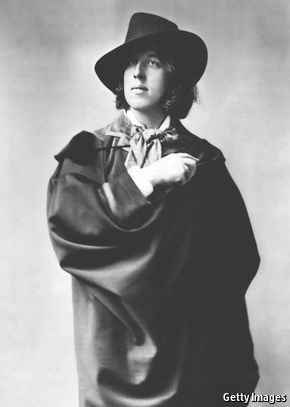
Fine and dandyThe
Fall of the House of Wilde. By Emer O’Sullivan. Bloomsbury;
495 pages; £25. To be published in America in October; $35.
AS A child,
Oscar Wilde announced that he would like to be remembered as the hero
of a “cause célèbre and to go down
to posterity as the defendant in such a case as ‘Regina Versus Wilde’”.
He succeeded, of course, and his notoriety poses a problem for biographers
unlikely to discover anything new about the great aesthete. They increasingly
turn to the lesser-canonised figures in his sphere; in 2011 came Franny
Moyle’s account of Wilde’s wife, Constance Lloyd. Then “Wilde’s Women”
by Eleanor Fitzsimons. Now Emer O’Sullivan, the author of a new book
“The Fall of the House of Wilde”, places Oscar in the context of his
immediate family, stating that “it is to No.1 Merrion Square we need
to look for the formation of Oscar’s mind.”
This approach
can reap rewards. Some familial ties are plain to see; Oscar’s renowned
style and turn of phrase finds its origins in his mother, Jane; she
deplores those who “paraphrase a Poet into the prose of everyday life”
and rebukes the subtitle of “Lady Windermere’s Fan” on the grounds that
“no one cares for a good woman.” Jane’s salons attracted intellectual
figures, with attendants seeking to display their wit and conversational
skill. Oscar emulated these events—notably in his drawing-room dramas,
where style was paramount—but also in his salons, named “Tea and Beauties”,
in London.
The Wildes
prized independent thinking. Sir William, a renowned polymath and
doctor, controversially advocated interracial coupling, arguing that
it encouraged diversity of thought and the progression of society. His
wife Jane wrote poems raging with republican spirit, felt passionately
about the “bondage of women” and translated a deeply unpopular work
on temptation. Oscar inherited this sense of intellectual daring and
the need to push boundaries. In one of his first pieces of professional
writing, he praises the patent homoeroticism of paintings by Spencer
Stanhope. Other reviewers, likely fearful of social condemnation, turned
a blind eye.
Yet Ms O’Sullivan
often strains to make parallels that aren’t there. Much is made,
for example, of Oscar’s affair with Robbie Ross, two years into his
marriage with Lloyd. This is the exact time, Ms O’Sullivan notes, at
which a patient of William’s called Mary Travers aroused suspicion
from Jane. According to Ms O’Sullivan, this may be an echo of the memory
or significant “of an order underlying the chaos of human relationships”.
That father and son shared a wandering eye does not warrant such sweeping
statements.
At the same
time, obvious parallels are ignored or suffer from a lack of information.
Jane’s lifelong interest in women’s rights and the undervalued intellects
of wives surely influenced Oscar’s decision to edit Woman’s World, a magazine which provided more varied
reading material for an emerging class of educated women. How his family
responded to Oscar’s trial and imprisonment—the climax of any biography
of the writer—readers can only guess: “what Jane or Willie [Oscar’s
brother] thought about Oscar’s pending trial is nowhere recorded.” Similarly,
the impact of the trial upon Oscar’s children—who dropped the surname “Wilde”
as a result of the scandal—is barely mentioned.
Readers may
finish the book longing for more detail on Jane Wilde, who is repeatedly
lauded as a literary force in her own right (though with little textual
support). It is her fate that is the most disquieting. Oscar achieved
his aim to be remembered by history—his grave in Paris is a site of
pilgrimage. Jane, however, paid the price of his fame. Once voted the
greatest living Irishwoman by her contemporaries, Jane Wilde was buried
in poverty “without fanfare—without name or record…in soil to which
she did not belong”.
Cambodia
Buried treasure
It may not
look like much now, but in the 12th century, Preah Khan of Kompong
Svay (pictured) was part of the world’s largest urban settlement and
one of its most powerful empires. Found beneath the forest floor near
Angkor Wat using lidar (like radar, but with lasers), these cities
of the Khmer Empire show complex water systems built centuries before
the underlying technology was believed to have existed, as well as highways
connecting major settlements. The lack of evidence of a substantial relocated
population nearby casts doubt on the widely accepted theory that the
Khmer Empire collapsed when the Siamese invaded. More maps will be published
in the coming months.
Đế Quốc Khờ Me dưới lòng đất
My Old Saigon
Chắc cũng gần tòa soạn
báo Văn
https://www.flickr.com/photos/13476480@N07/27134222114/in/photostream/
|
Trang NQT
art2all.net

Lô
cốt
trên
đê
làng
Thanh Trì,
Sơn Tây
|
|

